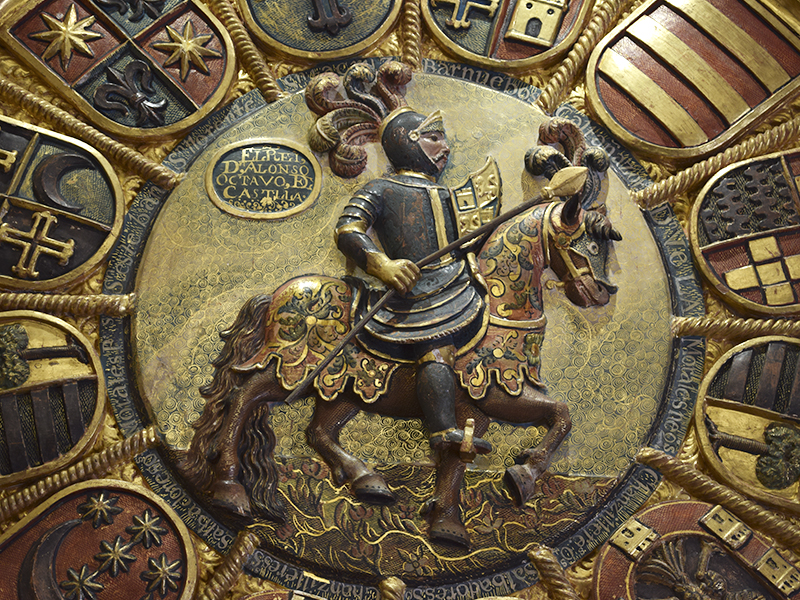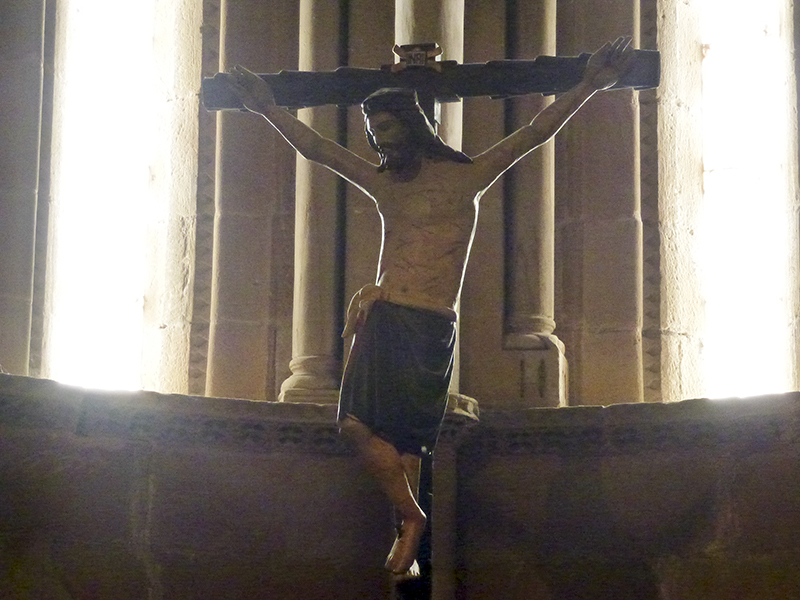
Legendary Medieval Times
The first lords of the town of Soria, after the population settlement promoted by Alfonso I “the Warrior” in 1119, were brothers of the Order of the Temple, and the wardens of the castle. And tradition is that the hermitage of San Polo was the Temple. But now what we care about is the Templar legend of Cristo del Olvido or Christ Cillerero found in the church of San Juan de Rabanera. It is said, in this regard, that Muslims locked some Christian prisoners in a barn, which drew on the wall the image of the crucified. This appeared to them all in a dream on the same night advising patience and resignation because eventually would be released. Upon awakening they found they had had the same dream, but tired of their captivity was told one thing and another to preach wheat.
Eventually they were released by Christians and the Cilla was used as a barn, but it happened that the grain is never exhausted by many sacks to bring forth. One day down to the base of the cilla and discovered a statue of a crucified Christ, which was nothing but a miracle, because it was identical to the image that the prisoners had painted. And it is said that he said, “How have you forgotten me, but also I give wheat preaching”. Christ, according to the legend, he was transferred to San Polo and then to San Juan de Rabanera, where it may be on a gores cross.
The Eras of Santa Barbara are the scene of several historical legends. Yesteryear “Field of Truth” were called in memory of the next epic: Ten Castilian knights and ten Aragonese-Catalan dueling to determine whether or not it will Soria be in Castilla, winning the Castilian of Alfonso VII. There sword kills a father to his son coward who fled Aljubarrota and telling you that “before being coward, death.” Here the French would shoot a 12-year-old that with his knife killed a French soldier, as it would happen with Pericón, who faced only a squad of Imperial cuirassiers and whose body would hang pilloried several days.
Likewise, the protection that the child King Alfonso VIII had by sorian people against the king of Leon and the Castro is subject of several legends , and we must also highlight the existing symbolic relationship between the wheel of the Twelve Lineages and myth of the Round Table of King Arthur.
The murders are also a source of legends, as it happens with the death of Garcilaso de la Vega in the Franciscan convent, as it was he prophesied by a witch in Sierra Morena. Martin de San Clemente will be killed by order of Juan de Luna next to the Tower of Doña Urraca, by order of her husband, Alfonso I “the Warrior”, being released by two of her lovers, Candespina Gomez and Pedro de Lara. Juan Luna was then shot through the castle and his head was stuck on a pike.
The mysterious lady we see on the top of the main shield that crowns the gate of the palace of the Counts of Gómara is, according to legend, the own wife of Juan Manuel de Salcedo and Beaumont, Count of Gómara. This noble found his wife looking out a window of the tower and loving listening lays a troubadour, and to remind this affront Count entered the scene to his coat of arms.
Another legend tells of the loves of Infante Don Juan, son of Pedro “the Cruel” with the Soria Castle mayor’s daughter, Beltran Minion, called Elvira. One version says she did not listen to her lamentations because she loved another, so that he would die of love and his mummy would be stored in the Co-Cathedral. Another version relates that on the night of San Juan, as was customary, Elvira consulted the saint who would be her husband the way as they did the marriageable maidens was dipping his left foot in a basin of holy water, at 12 pm . Both loved each other, but King Juan I of Castile urged him to become a priest or monk or, if married Elvira, to live imprisoned in the castle of Soria with her it, the latter option adopted in 1388.











